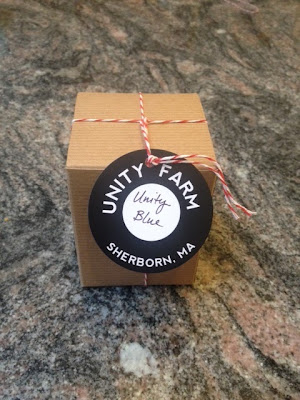
Last night was 39 degrees and we're wrapping up all the projects of summer since fall officially begins this Sunday.
We've picked our early apples (Honeycrisp and MacIntosh) and are watching our late apples (Empire) ripen quickly.
Our blueberries and raspberries are already preserved.
Squash, beans, and root vegetables are picked and sitting in our drying racks.
We're finishing the construction of our hoop house for winter vegetables (more about that next week).
All our summer babies have been born - 73 guinea fowl in 3 batches. We've moved the 4 week olds into the coop and sold the second batch to a farm near Rhode Island. The third batch will be going to a farm in central Massachusetts.
We'll have alpaca babies next summer.
Before the weather turns too cold, we're finishing the inoculation of the logs we cut this year and harvesting mushrooms from logs we inoculated in the spring such as the oyster mushrooms shown above. We have three mushroom growing yards on the farm.
The first is in a grove of pine trees just outside our wetland border. It's cool, shady and moist. It has 48 poplar logs inoculated with two species of oyster mushrooms
PoHu - This oyster strain is the most “wide range” of Oyster strains with multiple fruitings throughout the growing season, including summer. PoHu is a heavy producer and grows many ocher to white colored mushrooms in thick clusters.
Grey Dove - This Oyster strain is prolific and reliable. Steel blue pins slowly change into silvery grey as the cap matures. The shape is classic Oyster; graceful stem with a shell-shaped cap.
The second area is in a fern grove under the largest pine trees on the farm. It's a little drier and warmer. It has 96 poplar logs inoculated with four species of oyster mushrooms.
Italian - A mild flavored mushroom with a thick stem that grows in gorgeous clusters. Mature mushrooms have a delicate brown colored cap with beautifully contrasting white stems.
Blue Dolphin - Also known as the “Fall Fruiting Tree Oyster,” this strain undergoes a lovely metamorphosis from the frosty blue pins through the pewter gray clusters of the mature mushrooms. Blue Dolphin is a prolific fruiter in cooler weather, especially after the first near-frost temperatures in autumn. It needs near freezing temperatures to stimulate fruiting.
Golden - A luminous citrine yellow mushroom with a tangy flavor perfect in small quantities as an edible garnish. This mushroom lightens in color when sautéed to provide a fungal feast for both palate and eye. Golden Oysters fruit naturally in late spring and again in late summer - perfect for outdoor summer cultivation.
Polar White - A lovely icy white, cool weather Oyster mushroom that fruits in the fall. This strain has dense, porcelain white caps and is incredibly flavorful.
We recently added 110 Shitake logs to the fern grove - ten logs for each species described below.
The third area is our shade house - 85% shade cloth 30 feet long, 10 feet wide and 10 feet high. It has 11 species of Shitake in 165 logs
Bellwether - In both spring and fall, it fruits with an abundance of large, thick, cup-shaped mushrooms with layer upon layer of white lace ornamentation. It's a highly productive, cool season fruiter.
Chocolov - This strain produces medium sized, round, almost glossy capped mushrooms the color of dark chocolate. It fruits late in the fall.
Miss Happiness - A gorgeous late fall fruiting strain with uniformly round brown caps.
Snow Cap - Produces beautiful, uniform, thick fleshed caps tufted with white lacey ornamentation. Heaviest fruiting occurs early spring and late fall.
Double Jewel - This strain produces large, dense, beautifully ornamented mushrooms, often in attractive paired clusters, inspiring the name. Fruits naturally in the spring and fall.
Native Harvest - Native Harvest gives a late fall flush; an added bonus for the Thanksgiving table!
West Wind - West Wind features large, thick, first flush mushrooms, and heavy yields. West Wind is also slightly more drought tolerant than other strains. Fruits naturally in the spring and fall.
WR46 - A popular commercial strain that offers heavy first flushes and quick log recovery after fruiting.
Night Velvet - This warm weather strain produces big, plump mushrooms that are like picking apples.
WW44 - This strain produces mushrooms with thick, round, honey colored caps which are perfectly shaped and maintain high quality during periods of excessive humidity.
WW70 - This warm/cool weather strain has a late summer - late fall fruiting period. It is also one of the most beautiful, with dark caps and lots of contrasting ornamentation.
Finally, in our shade house we also inoculated 12 logs with Lion's Mane.
Last night's dinner included Italian oyster mushrooms sautéd with our farm grown onions.
Of course the woodlands at Unity Farm yield their own native mushrooms, many of which are edible - boletes, morels, chanterelles, coprinus, and maitake (hen of the woods). Some, like this parasol mushroom, are strikingly beautiful.
















